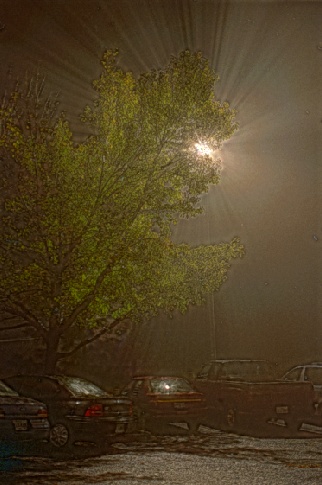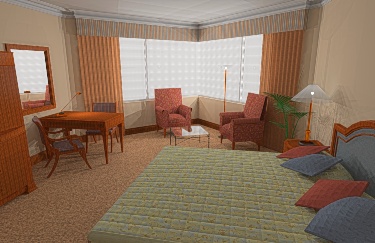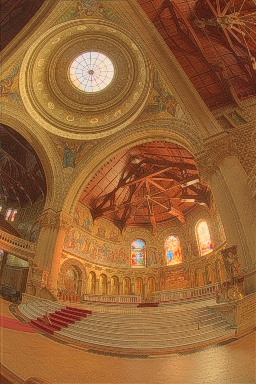High Contrast Image Display
- "LCIS: A Boundary Hierarchy For Detail-Preserving Contrast Reduction"
- Jack Tumblin and Greg Turk
- SIGGRAPH 99 Conference Proceedings
- pp. 83-90
PDF version of paper (0.4 Mbtyes)
Abstract
High contrast scenes are difficult to depict on low contrast displays
without loss of important fine details and textures. Skilled artists
preserve these details by drawing scene contents in coarse-to-fine order
using a hierarchy of scene boundaries and shadings. We build a similar
hierarchy using multiple instances of a new low curvature image
simplifier (LCIS), a partial differential equation inspired by anisotropic
diffusion. Each LCIS reduces the scene to many smooth regions that are
bounded by sharp gradient discontinuities,and a single parameter K chosen
for each LCIS controls region size and boundary complexity. With a few
chosen K values K1,K2,K3... LCIS makes a set of progressively
simpler images, and image differences form a hierarchy of increasingly
important details, boundaries and large features.
We construct a high detail, low contrast display image from this hierarchy
by compressing only the large features, then adding back all small details.
Unlike linear filter hierarchies such as wavelets, filter banks, or image
pyramids, LCIS hierarchies do not smooth across scene boundaries,
avoiding "halo" artifacts common to previous contrast reducing methods and
some tone reproduction operators. We demonstrate LCIS effectiveness on
several example images.
Below are some color figures from the paper:



Go to
Greg Turk's Home Page.
